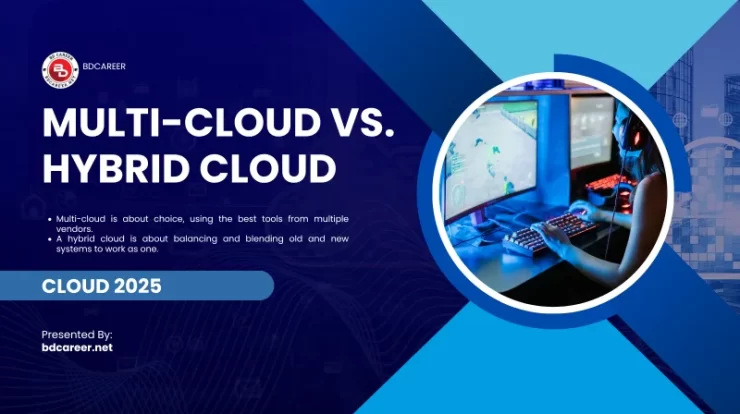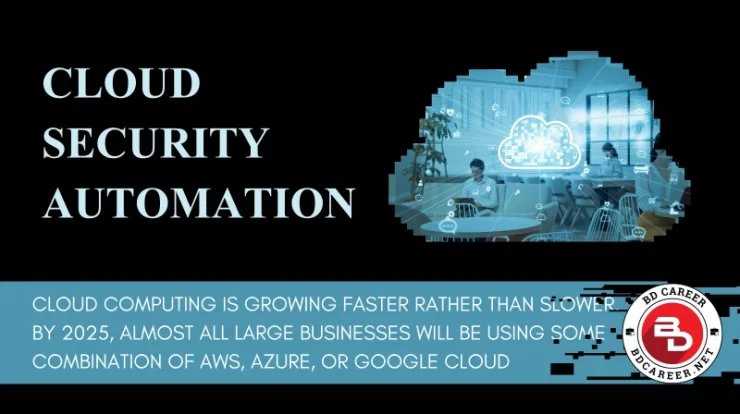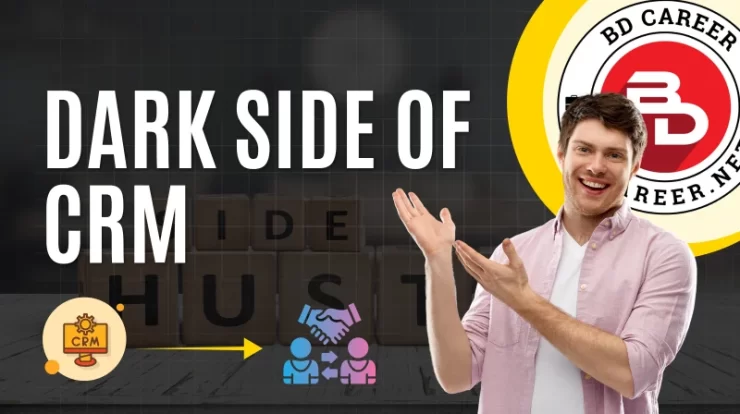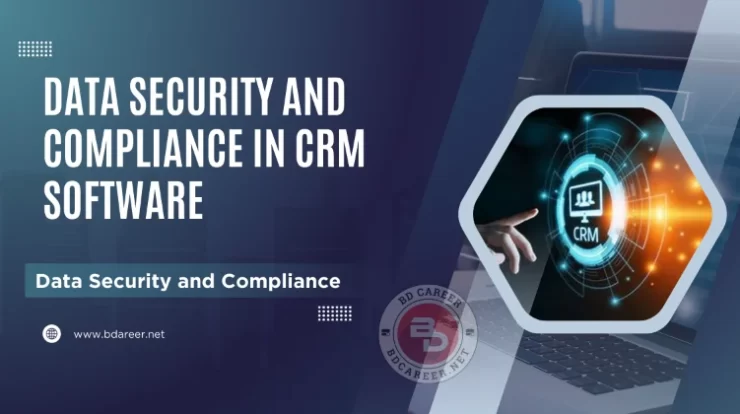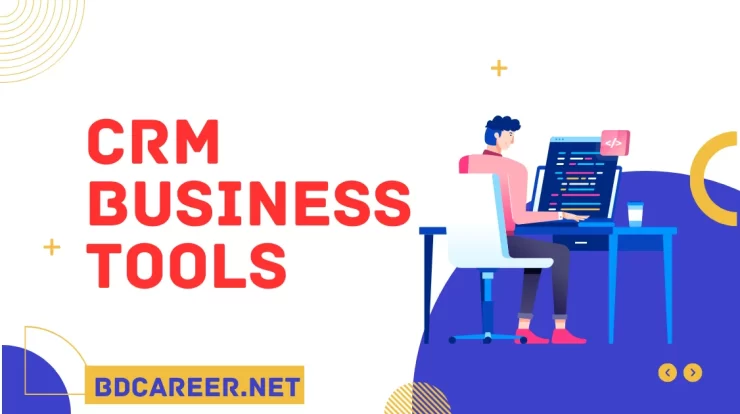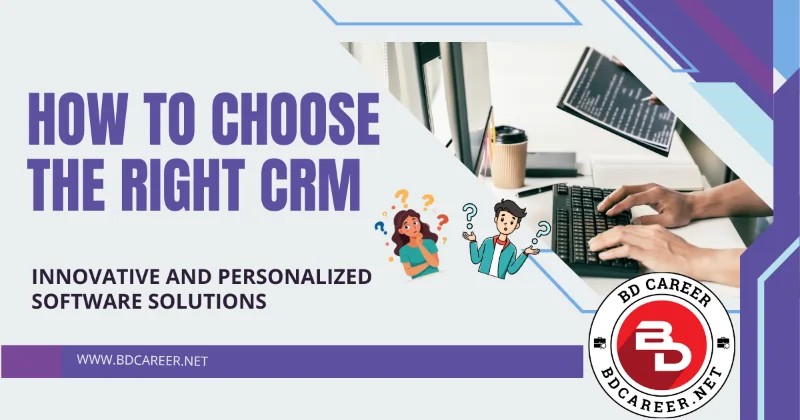
Customer Relationship Management (CRM) systems are essential tools for modern businesses aiming to build stronger customer connections and drive growth. Did you know that 91% of businesses with 10 or more employees use a CRM system to streamline their operations? It’s not surprising when you consider how much easier life gets with the right CRM keeping all your customer data in one place, automating tedious processes, and even forecasting your next big win.
But here’s the catch: choosing the right CRM isn’t a one-size-fits-all deal. With so many options out there, it’s easy to feel overwhelmed. That’s where I come in. As someone who’s been blogging about tech and business for years, I’ve seen the CRM game evolve. This guide will help you navigate the maze, so you can make a choice that truly fits your business.
From understanding what a CRM is to assessing your needs and picking the best features, I’ve got you covered. Ready? Let’s dive in.
Contents
- What is a CRM and Why Does Your Business Need One?
- Assessing Your Business Needs Before Choosing a CRM
- Here’s a quick checklist to get you started:
- Types of CRMs: Which One Fits Your Business?
- Key Features to Look for in a CRM
- Budgeting for Your CRM: Costs vs. Value
- Comparing CRM Vendors: How to Make the Right Choice
- Implementing Your Chosen CRM: Best Practices
- Measuring Success: Is Your CRM Working?
- Conclusion
- Frequently Asked Questions
What is a CRM and Why Does Your Business Need One?
A CRM is a software solution designed to manage and analyze customer interactions throughout their lifecycle. It consolidates customer information, tracks communications, and facilitates personalized marketing efforts. For businesses, a CRM is invaluable in improving customer satisfaction, increasing retention rates, and enhancing sales efficiency. Without a CRM, businesses risk losing track of vital customer details, resulting in missed opportunities and lower productivity. Implementing a CRM ensures a unified approach to customer management, fostering stronger relationships and a more streamlined workflow.

Assessing Your Business Needs Before Choosing a CRM
Before diving into the world of CRMs, it’s crucial to evaluate your business’s unique requirements. Start by identifying the challenges you aim to solve is it better lead management, enhanced customer service, or improved collaboration among teams? Understanding your goals will help narrow down CRM options that align with your priorities.
Additionally, consider the size of your business and the complexity of your operations. Small businesses might prefer simple, user-friendly CRMs, while larger enterprises often require advanced features like automation and analytics. Engage your team in the selection process to ensure the chosen CRM addresses their daily pain points. A thorough needs assessment sets the foundation for selecting a CRM that genuinely supports your objectives.
Here’s a quick checklist to get you started:
Business Area | Common Pain Points | CRM Solution |
Sales | Tracking deals and pipelines | Sales tracking, automated reports |
Customer Service | Slow response times | Ticketing systems, chat integrations |
Marketing | Inefficient campaigns | Email automation, analytics |
Types of CRMs: Which One Fits Your Business?
CRMs can be categorized into three main types: operational, analytical, and collaborative. Understanding these categories helps businesses choose a solution tailored to their needs.
- Operational CRMs: These focus on automating customer-facing processes, such as sales, marketing, and customer support. They are ideal for businesses looking to streamline workflows and improve efficiency.
- Analytical CRMs: These systems emphasize data analysis, enabling businesses to gain insights into customer behaviour and trends. They are suitable for data-driven organizations that rely on informed decision-making.
- Collaborative CRMs: These prioritize communication and information sharing across departments. They are designed for businesses that value teamwork and seamless interdepartmental collaboration.
Type | Best For | Examples | ||||
Operational CRM | Automating sales/marketing processes | HubSpot, Zoho CRM | ||||
Analytical CRM | Making data-driven decisions | Salesforce, SugarCRM | ||||
|
| Monday.com, Pipedrive |
Selecting the right type depends on your business’s primary focus and long-term strategy. Consider your operational priorities to determine the best fit.

Key Features to Look for in a CRM
A robust CRM should offer features that enhance productivity, foster collaboration, and deliver actionable insights. Key features to consider include:
- Contact Management: Centralized storage of customer information for easy access.
- Lead and Opportunity Tracking: Tools to track sales prospects and manage the sales pipeline effectively.
- Automation: Automated workflows for repetitive tasks like email follow-ups or data entry.
- Analytics and Reporting: Detailed metrics and reports to measure performance and identify trends.
- Integration Capabilities: Compatibility with existing tools like email platforms, marketing software, and accounting systems.
- Mobile Accessibility: A mobile-friendly CRM ensures teams can work on the go.
- Customization: Flexibility to tailor the CRM to your business processes and branding.
- Security: Robust data protection to safeguard sensitive customer information.
Evaluate CRM options against these features to ensure they align with your business’s operational and strategic needs.
Feature | Why It Matters |
Contact Management | All your customer data is in one place. |
Sales Tracking & Reporting | Clear pipeline visibility and insights. |
Marketing Automation | Save time and scale your efforts. |
Integration Capabilities | Works with your current tools (e.g., email). |
Scalability | Grows with your business needs. |
Budgeting for Your CRM: Costs vs. Value
Budgeting is a critical aspect of selecting a CRM. Costs can vary widely depending on the software’s capabilities, the number of users, and additional services like training and support. While free or low-cost CRMs might appeal to small businesses, they may lack scalability or advanced features. On the other hand, investing in a high-end CRM might be unnecessary for businesses with simpler needs.
Consider the long-term value a CRM brings to your business. Features like automation, analytics, and integration can significantly improve efficiency and revenue generation. Always balance the upfront costs with the potential return on investment (ROI) to ensure the CRM delivers value over time.
Pricing Models:
- Subscription-based (SaaS): Pay monthly/annually. Great for flexibility. Examples: HubSpot, Salesforce.
- One-time purchase: Pay upfront. Works for businesses that want long-term savings. Examples: Microsoft Dynamics 365 (on-premise).
- Freemium: Basic features free, pay for premium tools. Examples: Zoho CRM.
Factors that Affect Cost:
- Number of users: More team members = higher subscription costs.
- Add-on features: Advanced analytics, integrations, or automation tools.
- Implementation services: Setup, training, and customization can add to the bill.

Comparing CRM Vendors: How to Make the Right Choice
With numerous CRM vendors in the market, selecting the right one can be overwhelming. Start by researching top-rated providers and comparing their offerings. Request demos or trials to understand the software’s usability and features. Pay attention to customer reviews and testimonials to gauge user satisfaction.
Additionally, assess the vendor’s support services and scalability options. A good CRM vendor should offer reliable customer service, regular updates, and the flexibility to grow with your business. Create a checklist of your requirements and evaluate vendors based on how well they meet your needs.
Vendor | Strengths | Pricing |
Salesforce | Customization, Analytics | $$$ (Premium |
HubSpot | Easy-to-use, marketing integration | $$ (Mid-range) |
Zoho CRM | Affordable, scalable | $ (Budget-friendly) |
Freshsales | Built-in phone and email tools | $-$$ (Flexible) |
Implementing Your Chosen CRM: Best Practices
Successfully implementing a CRM requires careful planning and execution. Begin by assigning a dedicated team or project manager to oversee the process. Next, migrate existing customer data into the CRM, ensuring its accuracy and completeness. Train your team thoroughly to maximize the software’s potential and encourage adoption.
Start with a phased rollout, focusing on one department or function before expanding across the organization. Regularly gather feedback to address issues and refine processes. A smooth implementation ensures your business can quickly benefit from the CRM’s capabilities.
Steps for a Smooth Implementation:
- Train your team: Ensure everyone knows how to use the system. Host workshops or provide online training.
- Migrate data carefully: Double-check everything to avoid errors during the switch.
- Start small: Roll out the CRM to a single department before expanding.
- Monitor performance: Track KPIs (more on that in the next section).
Common Pitfalls to Avoid:
- Skipping training.
- Trying to migrate too much data at once.
- Overloading your team with features they don’t need.
Measuring Success: Is Your CRM Working?
To evaluate your CRM’s success, track key performance indicators (KPIs) such as customer satisfaction, sales growth, and operational efficiency. Regularly review these metrics to identify areas for improvement. If the CRM is meeting your goals and delivering a positive ROI, it’s a clear indicator of success.
Key Performance Indicators (KPIs):
- Lead conversion rate: Are you turning more leads into customers?
- Customer retention: Are clients staying longer and happier?
- Sales cycle length: Is your team closing deals faster?
Conclusion
A CRM is more than just software; it’s a strategic tool for building lasting customer relationships and driving business growth. By understanding your needs, evaluating options, and implementing best practices, you can select a CRM that empowers your team and enhances your operations. Take the first step today by exploring CRM solutions that align with your goals and set your business on a path to success.
Frequently Asked Questions
Answer:
Key features to consider include:
- Contact management: To store and manage customer information.
- Sales pipeline management: To track deals and revenue opportunities.
- Automation: For streamlining tasks like follow-ups and email campaigns.
- Integration: Compatibility with existing tools like email, ERP, or social media.
- Analytics and reporting: To measure performance and improve decision-making.
Choose features that align with your business goals and industry needs.
Answer:
To ensure user adoption:
Involve end-users in the selection process to align the software with their needs.
Provide comprehensive training tailored to different user roles.
Encourage ongoing feedback and make iterative improvements to address user concerns.
Appoint CRM champions within teams to promote usage and share best practices.
Answer:
- Small Businesses: Look for affordable, user-friendly CRMs like Zoho CRM or HubSpot.
- Medium-sized Businesses: Opt for scalable options like Salesforce Essentials or Pipedrive.
- Large Enterprises: Focus on comprehensive solutions like Salesforce or Microsoft Dynamics 365.
Answer:
- Cloud-based CRMs: Ideal for businesses seeking flexibility, scalability, and ease of use. They are accessible from anywhere and require no significant upfront investment in infrastructure.
- On-premise CRMs: Suitable for businesses with strict data security needs and robust IT teams.
Evaluate your budget, IT capabilities, and data security policies to decide.
Answer:
- Involve stakeholders: Get input from sales, marketing, and customer service teams.
- Provide training: Ensure your team understands how to use the CRM effectively.
- Monitor usage: Regularly review adoption rates and address any issues promptly.
- Customize workflows: Adapt the CRM to fit your specific business processes.
